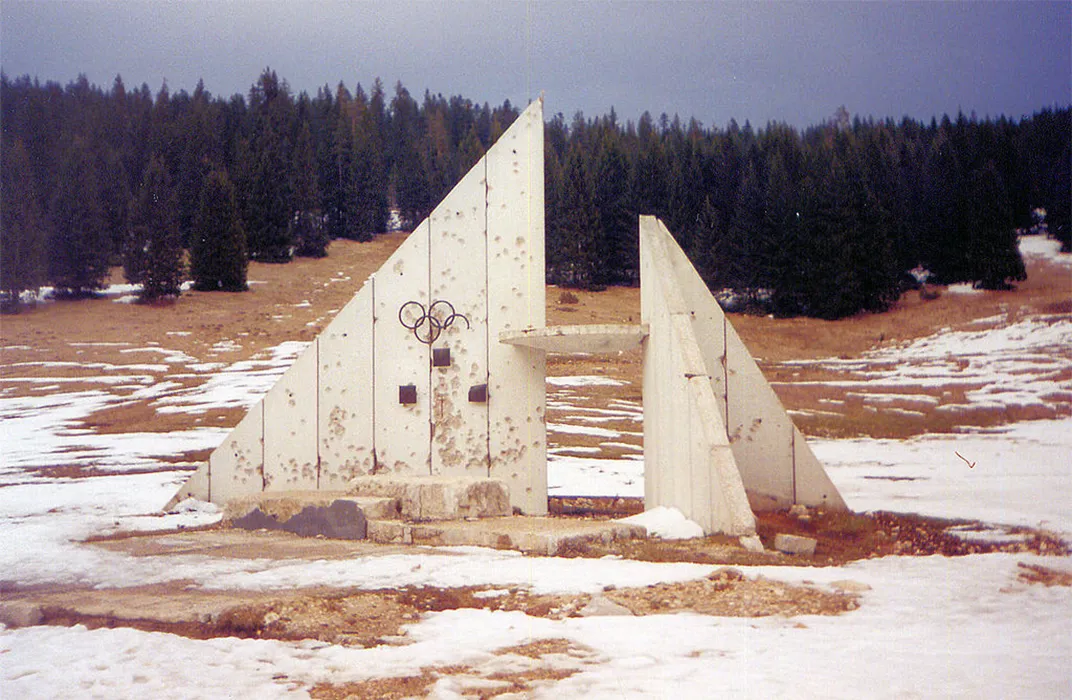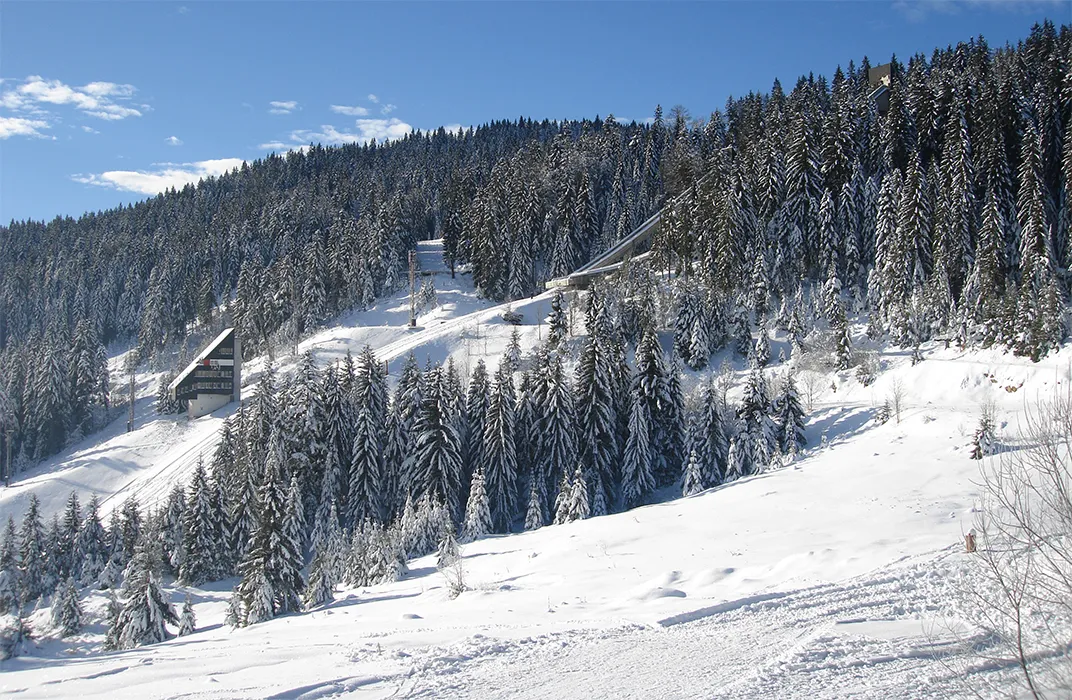Sarajevo’s Abandoned Olympic Sites
Haunting images of a war-torn Winter Olympic venue
The 2014 Sochi Winter Games cost more than all previous Winter Olympics combined, which raises the question: what's going to happen to all that expensive Olympic infrastructure after the games have gone? For cities that host Olympic Games, converting their stadiums and Olympic Villages into useable space is a challenging task; some places succeed, others fail, letting once vibrant structures fall into disuse. In Sarajevo, however, former Olympic structures tell more than a forgotten event. Riddled with bullet holes and covered with graffiti, the Sarajevo Olympic structures tell a tale of terrible conflict.
Less than a decade after the former Yugoslavia became the first Communist country to host the Winter Olympics (in 1984), bloody conflict from 1992-95 tore the country apart. During the Siege of Sarajevo, the longest seige of a capital city in modern warfare, fighters on both sides took to the mountains surrounding the city, using the Olympic structures as battlements and storage for their fighting and weapons. The bobsled track became an artillery stronghold for Bosnian-Serbs—some defensive holes, drilled by troops, can still be seen in the track's concrete walls. The ski jumps—also sites of heavy fighting—remain unused. In the mountains, buried land mines still pose risk for those who walk their inclines.
The Siege of Sarajevo left over 10,000 dead by some estimates—a toll so large that makeshift cemeteries had to be constructed all over the city. One such cemetery can be found in the middle of the Olympic arena, crumbling tombstones marking the graves of countless men, women and children killed by the violent conflict.
And yet the Olympic ruins offer a glimmer of hope for some. In an interview with Atlantic Cities, Jon Pack—one half of the project The Olympic City, which explores Olympic infrastructure after the games—cited Sarajevo as the most inspirational former Olympic site he visited. "The day I arrived, campers were having the time of their lives at the bottom of the hill," Pack said of the abandoned ski jumps. "They were playing football and competing in a series of challenges they called, 'Games Without Borders.' I saw this again at our other stops in Sarajevo – Olympic sites, ravaged by war, being reclaimed and used by regular folks."
/https://tf-cmsv2-smithsonianmag-media.s3.amazonaws.com/accounts/headshot/natasha-geiling-240.jpg)

/https://tf-cmsv2-smithsonianmag-media.s3.amazonaws.com/filer/9c/19/9c19e9bd-a9db-46ab-9c4d-787e47593758/02-graveyard.jpg)

/https://tf-cmsv2-smithsonianmag-media.s3.amazonaws.com/filer/4a/cf/4acf5603-8007-44e9-a3f5-d17dce58b18d/05-bobsled.jpg)
/https://tf-cmsv2-smithsonianmag-media.s3.amazonaws.com/filer/00/b8/00b8bc32-267c-4b3d-8f1b-e979107bb43d/06-bobsled-graffitti.jpg)
/https://tf-cmsv2-smithsonianmag-media.s3.amazonaws.com/filer/81/92/81929cb0-0341-411d-935d-0067890fffa0/07-restaurant-outside.jpg)
/https://tf-cmsv2-smithsonianmag-media.s3.amazonaws.com/filer/c4/67/c467a8dc-6347-4025-a499-b6bf98a51574/08-retaurant-inside.jpg)
/https://tf-cmsv2-smithsonianmag-media.s3.amazonaws.com/filer/cd/d3/cdd31bfb-6318-4ffe-9c83-19d327b006fe/09-skenderija.jpg)
/https://tf-cmsv2-smithsonianmag-media.s3.amazonaws.com/filer/c3/80/c380da9d-424e-4651-bc78-db6bd983ce92/10-igman-green.jpg)

/https://tf-cmsv2-smithsonianmag-media.s3.amazonaws.com/accounts/headshot/natasha-geiling-240.jpg)